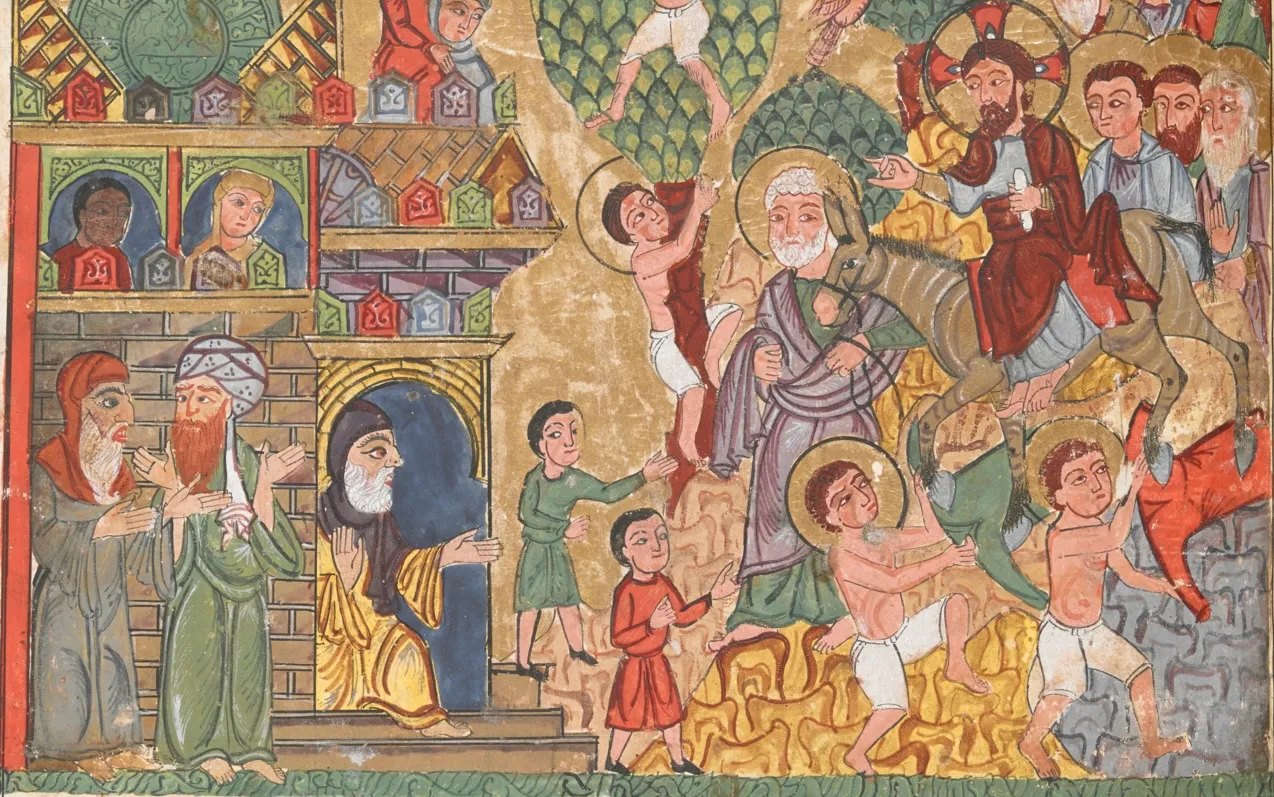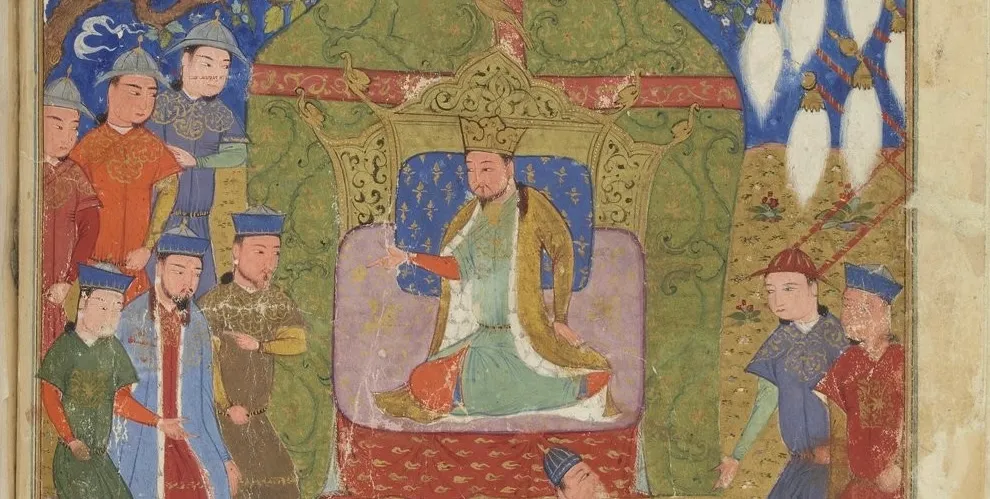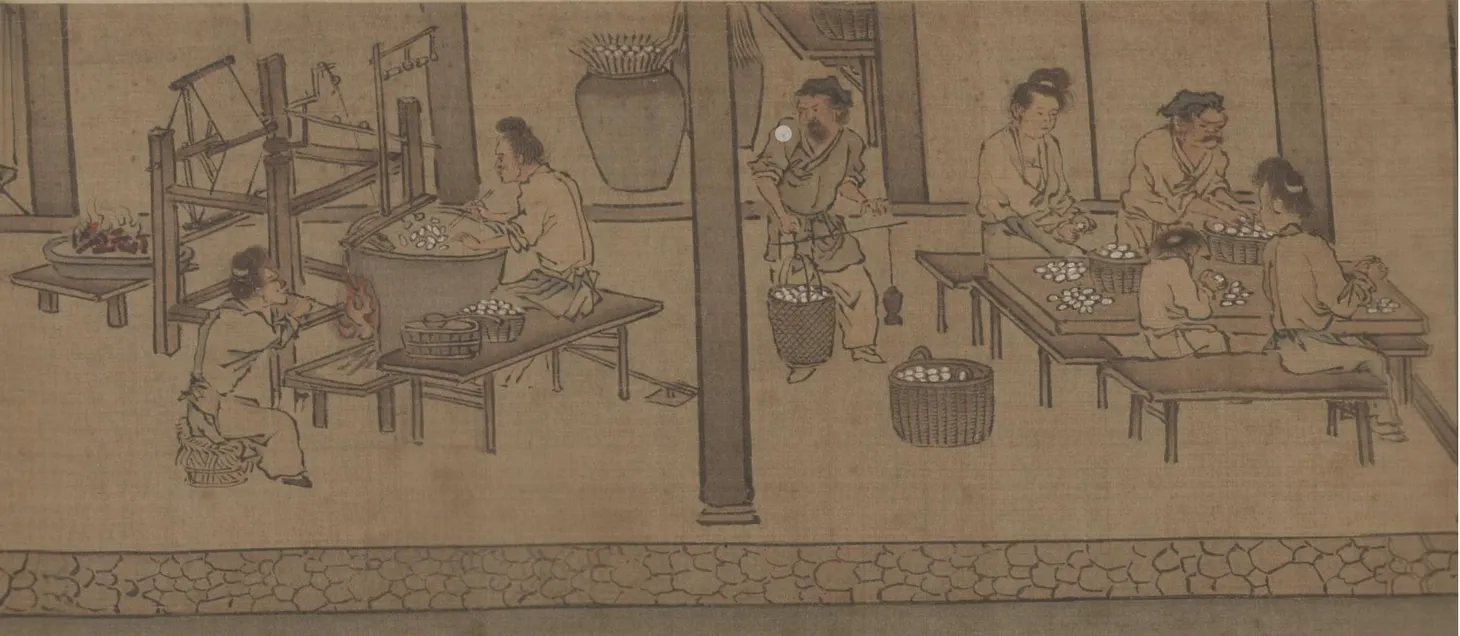“Addicted to the Coffeehouse”: Snapshots from the Ottoman Empire
A discussion of the challenges of teaching the Ottomans in world history courses and how to use an Ottoman coffeehouse to teach about the empire
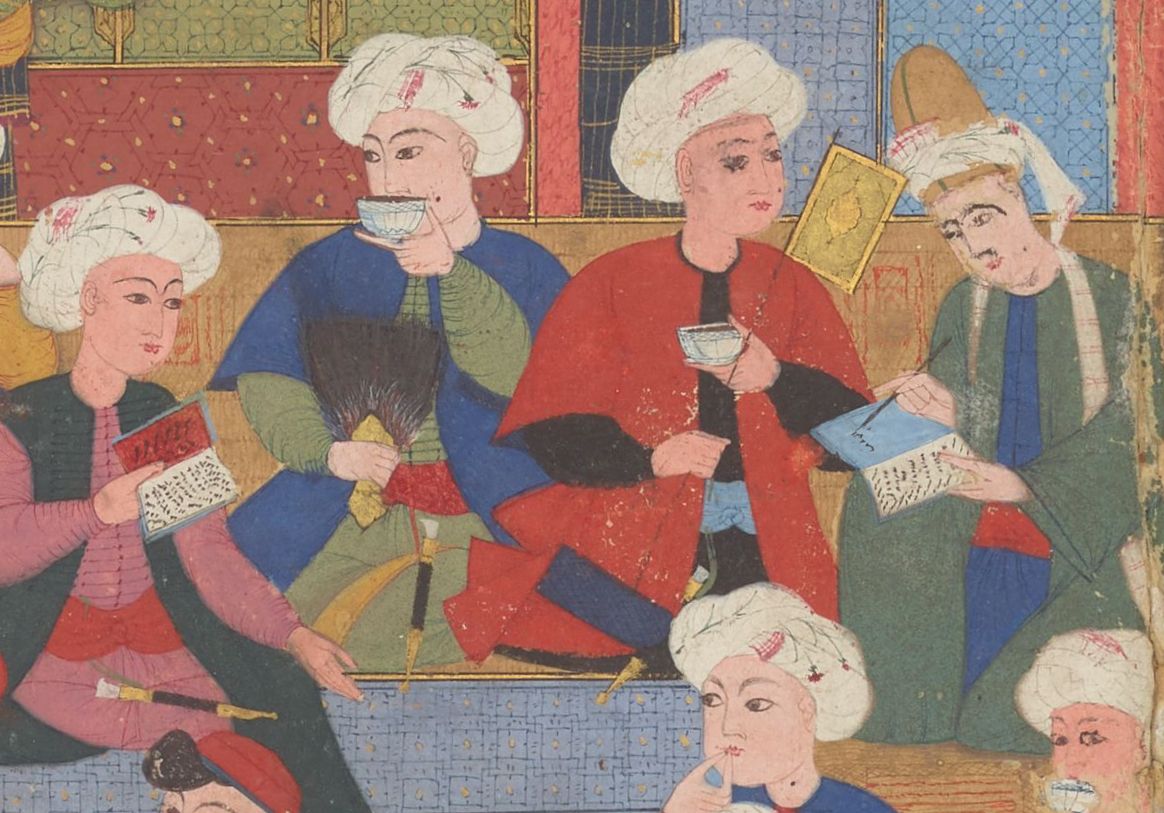
During the last two summers, my wife and I have traveled around the eastern Mediterranean, which means spending a lot of time in countries once part of the Ottoman Empire. I often found myself giving lots of impromptu Ottoman history lessons as we sat in the courtyards of caravansaries or mosques. I also read Marc David Baer’s excellent and provocative The Ottomans: Khans, Caesars, and Caliphs, which reinterprets this multiethnic, multireligious, and multilingual empire’s history. Instead of presenting the Ottomans as an Islamic, Middle Eastern empire, he tells a more nuanced story in which the Ottoman state was continually evolving. The Ottomans were as much a part of Europe as they were of the Middle East and North Africa.
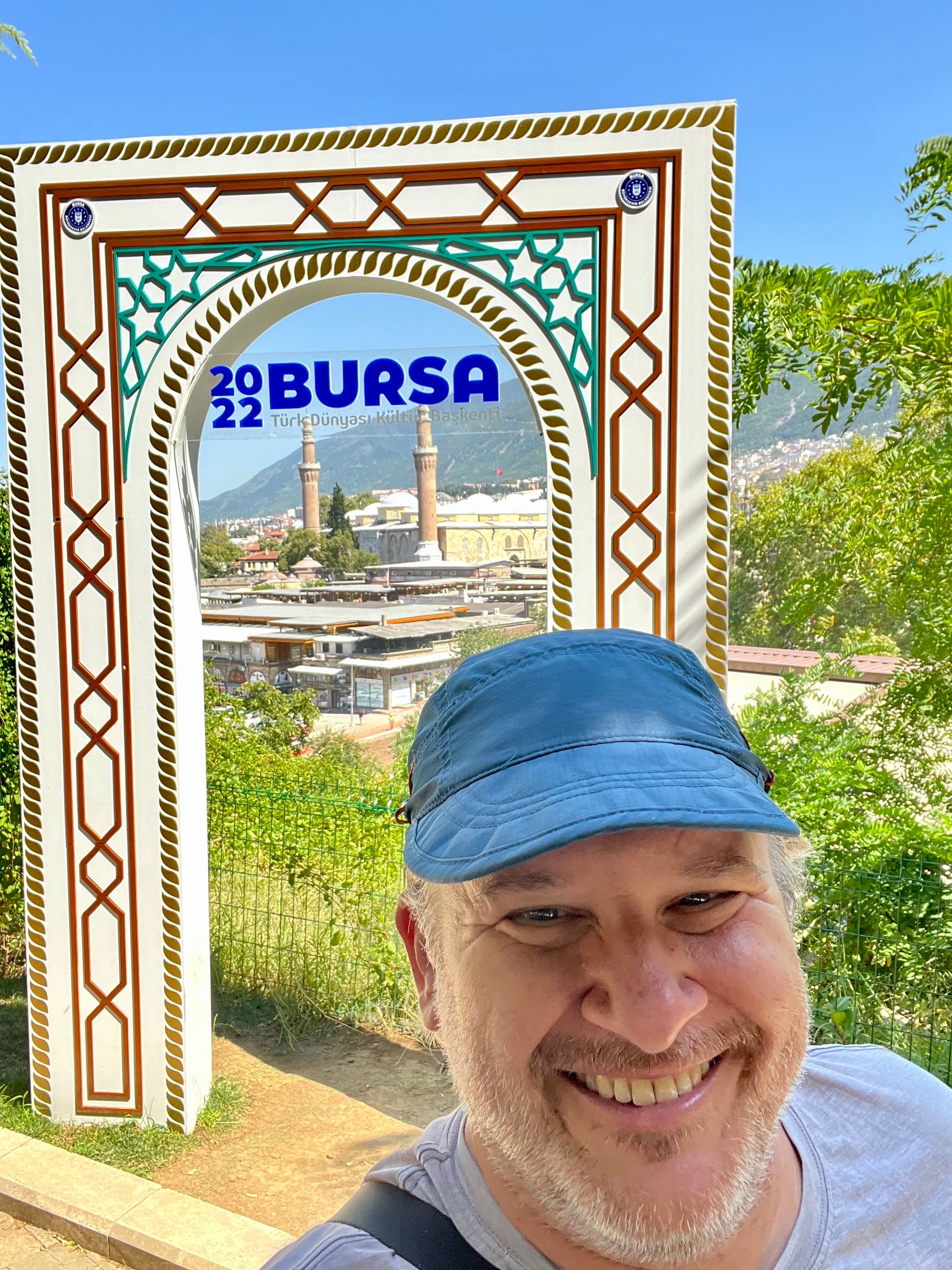
These experiences got me thinking about how we teach the Ottomans in world history courses. Their early era of expansion often dominates the story of the Ottomans and then a long period of decline. I’ve written before about how we should rethink this supposed start of the Ottoman Empire’s decline and its end as the “Sick Man of Europe.” This oversimplified story of the “rise and fall” of the Ottoman Empire fits nicely within a Eurocentric rise of the West narrative but is also deeply flawed. The challenge for teachers is telling the 600-year story of an empire that began in the medieval Mediterranean world and ended in the aftermath of the First World War.
Given these challenges, I realized that using a handful of images - a series of “snapshots” - would be an easy way for students to visualize how the Ottoman Empire evolved over 600 years. If you’re wondering how to use images in your classroom, here are two articles I find helpful. The first is an older one from the American Historical Association, and the second is from the Brooklyn Historical Society. The important issue is that we aren’t trying to use images as decoration. We want to treat them as visual primary sources, so we need to help students think about the historical context and pay attention to the subtle details in the images. I also encourage teachers to project images as large as possible on the screen so all students can see the image. If possible, iPads and tablets are excellent tools to use with digital images since students can easily zoom in on different parts of the image.
Drinking (Coffee) with the Ottomans
I’ve always enjoyed stories and movies that start in the middle and work backward, so I’ll begin this series of posts with an image from roughly the middle of the Ottoman Empire’s history. It’s also an image that is frequently in world history textbooks.
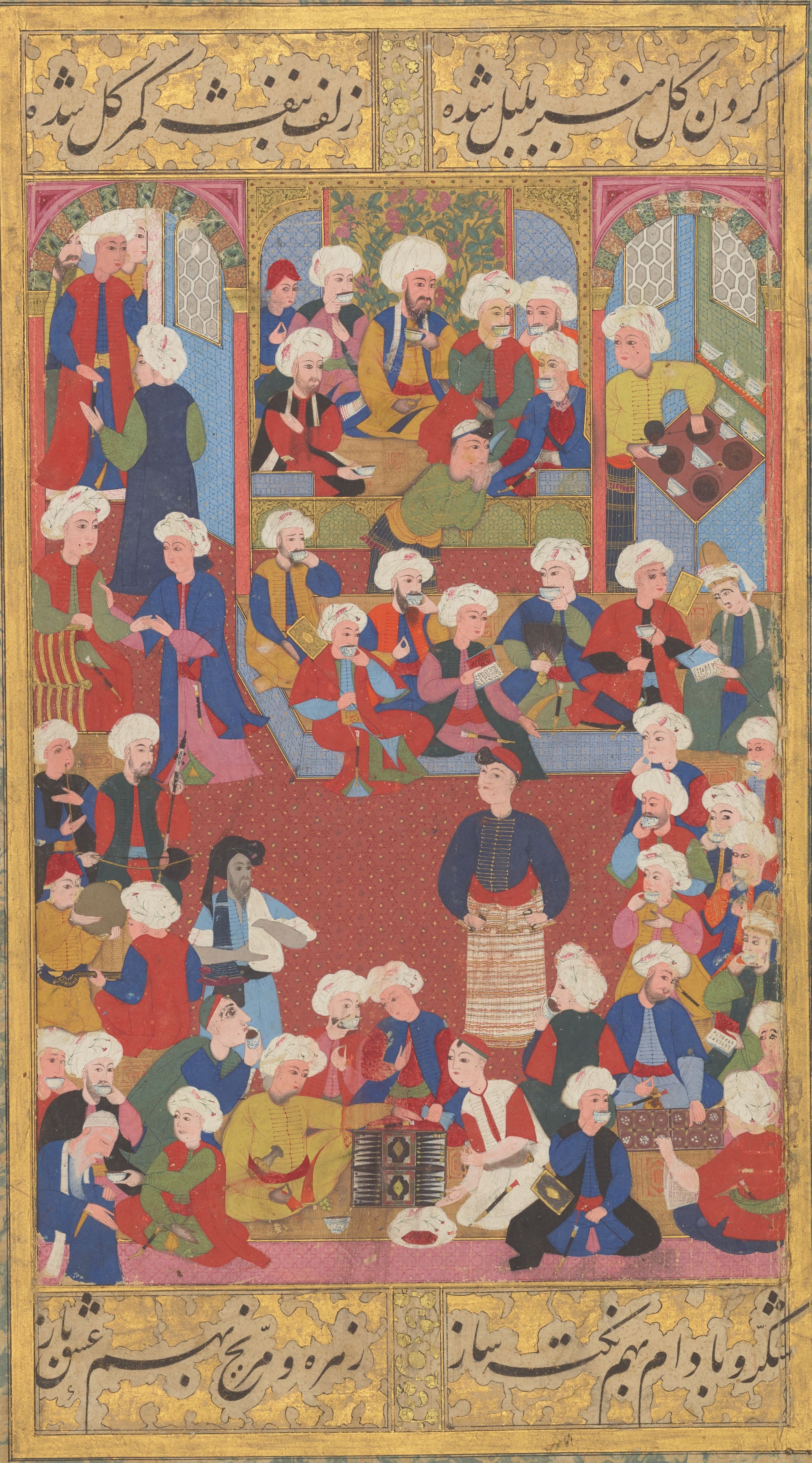
This miniature painting is usually described as a scene from an Ottoman coffeehouse in Istanbul. It can be found in the Chester Beatty Museum in Dublin. We don’t know who the artist was, but the image is believed to have been painted around 1620. The image is part of a manuscript with Persian text around the image. I also think it’s important to let students know the size of an image so they can have a sense of perspective. This one is 415 mm x 266 mm (16.3 inches x 10.4 inches).

